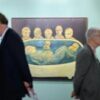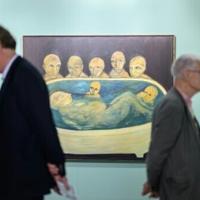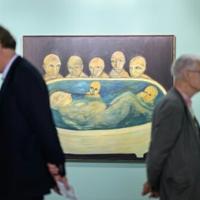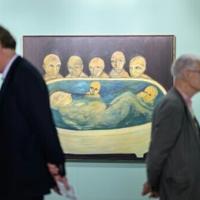25 July 2024
Art World
‘The art market in Asia is even stronger than in Europe,’ the former Pace Gallery director said. ‘It is a realm brimming with creativity.’
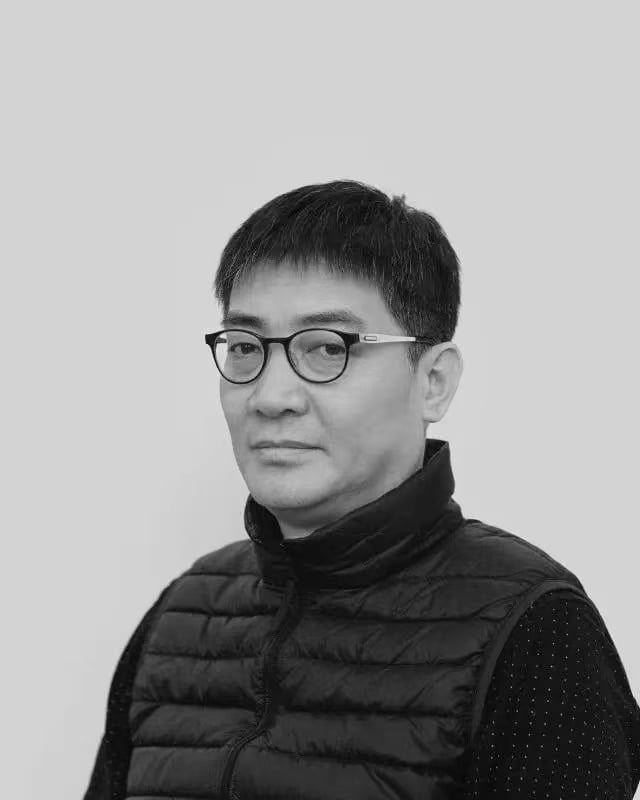
The View From is excerpted from The Asia Pivot, Artnet Pro’s biweekly members-only newsletter providing mission-critical analysis, insights, and exclusive intelligence on developments in Asia’s art markets, with a focus on business opportunities and challenges. Subscribe here to receive it directly to your inbox.
Leng Lin is an art critic, curator, founder of the gallery Beijing Commune, and a member of the artist collective “Polit-Sheer-Form Office,” which was initiated by artists Song Dong, Hong Hao, Xiao Yu, and Liu Jianhua in 2005.
In my observation, the art market in Asia is even stronger than in Europe. It is a realm brimming with creativity. Art not only transforms but can also liberate a region from conflicts in other dimensions.
Asian collectors iterate very quickly, reflecting the rapid changes characteristic of an art market still in its developmental stages. Despite economic fluctuations, the demand for art continues to rise, influenced more by evolving attitudes toward collecting than direct transactions. Observations from several cities in mainland China reveal varying degrees of support and vibrancy for art, from Beijing to Shanghai, and now to the Guangdong-Hong Kong-Macao Greater Bay Area. Of course, the gradual deepening of Hong Kong’s development is closely linked to its expanding and deepening commercial activities, which is quite apparent.
The first step in developing a robust art market is often termed the “attraction economy.” In this stage, mainstream discourse begins to serve as a dialogue partner, drawing attention and generating interest. As the market evolves, individuals start to contemplate their relationship with global culture, establish their own values, and engage in dialogue with others. This process is crucial for finding cultural subjectivity, where, through interaction and integration, one adjusts and further establishes oneself. Asian countries, especially China, with their long histories and strong cultural traditions, are highly diverse. This diversity can lead to rich interactions. Over the past century, Japan has navigated this path, providing a case study for China, which is undergoing its own imaginative and transformative journey.
Currently, the Asian market is still absorbing, far from reaching a saturation point. Market absorption involves comprehensive demand; it is also about maintaining an open, market-based attitude. Questions such as whether our museums have achieved permanence and stability, the status of artists’ creative development, and how perceptions of lifestyle have changed all require considerable time.

A work in artist Zhou Yilun’s fourth solo exhibition at Beijing Commune.
My previous tenure in the art industry, during which I endeavored to introduce numerous international artists to the Asian market, has impressed upon me that establishing a local art environment in Asia necessitates undergoing cultural transformation and requires the confidence of locals—artists, collectors, and museums alike.
The biggest difference between today’s artists and those of the past is not in their creative state but the market environment they face. Today, we have established fairs and auction systems, with a greater degree of professionalism, mixed with new challenges for artists.

Beijing Commune.
In Asia, especially in China, the rate of change is unimaginable. Each generation has its own dreams, which is genuinely exciting. As time passes, more exchanges occur, and various viewpoints emerge. The younger generation is collecting not just their peers but also across historical and cultural divides, representing an unlimited, imaginative state.
I can clearly sense that Asia’s (especially China’s) primary market is continuously growing, now establishing a stable foundation. The local market’s influence fluctuates, and so does people’s confidence. The local presence is not entirely closed off; rather, it is often open, facing comparisons with the external world. The market’s stability is still being established, and even the concept of a market ecosystem has not yet been fully developed; we still require a healthy non-profit sponsorship system and fluidity among artist groups.
If we are running a marathon, we have only run one-fifth of the distance.
—as told to Cathy Fan. This article was originally published in The Asia Pivot on May 15, 2024.
Follow Artnet News on Facebook:
Want to stay ahead of the art world? Subscribe to our newsletter to get the breaking news, eye-opening interviews, and incisive critical takes that drive the conversation forward.
More Trending Stories
This post was originally published on this site be sure to check out more of their content


